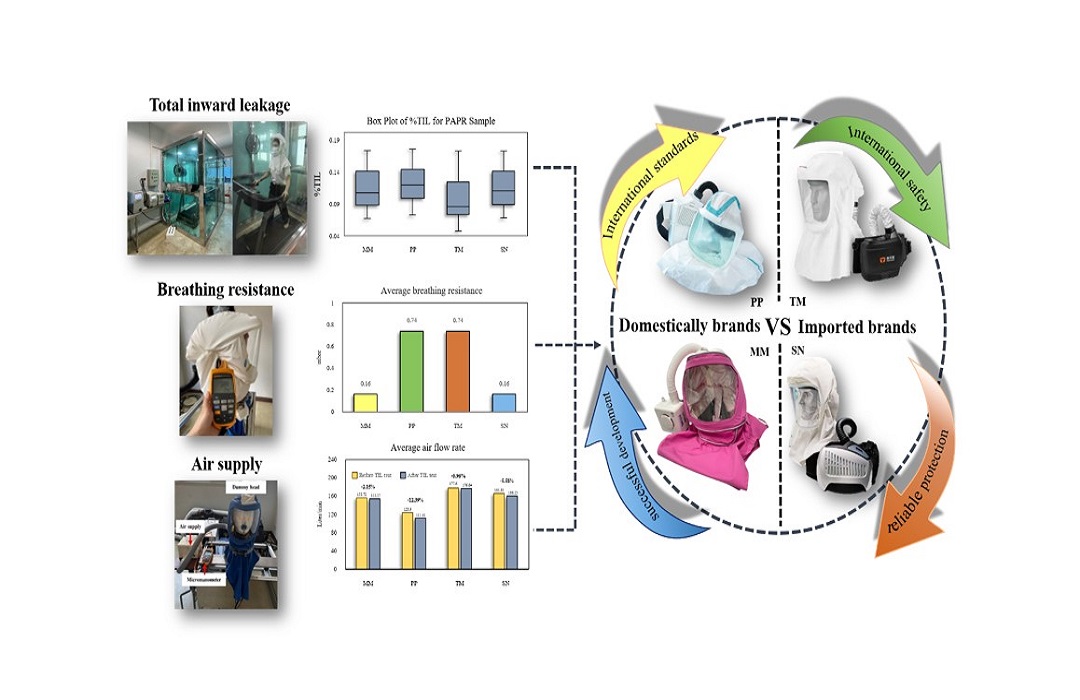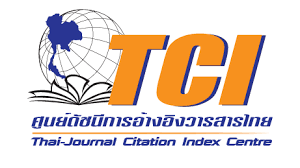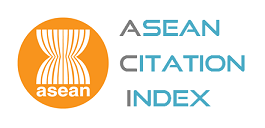Performance Evaluation of the Domestically Developed Powered Air Purify Respirator in Thailand
DOI:
https://doi.org/10.69650/ahstr.2025.3090Keywords:
COVID-19, powered air purifying respirator (PAPR), total inward leakage (TIL), air supply, breathing resistanceAbstract
The initial outbreak of COVID-19 in Thailand in 2020 revealed critical shortages in personal protective equipment (PPE), particularly Powered Air-Purifying Respirators (PAPRs), which are essential for protecting medical personnel from airborne pathogens. This study compared the performance of domestically manufactured PAPRs in Thailand (MM and PP) to two commercially imported models (TM and SM), both of which are generally recognized for their compliance with the EN 12941 standard. The study involved 20 subjects, comprised of 10 males and 10 females, to evaluate three key parameters: total inward leakage (TIL), air supply, and breathing resistance. To replicate real-world conditions, subjects wore ASTM-certified surgical masks beneath the PAPR during the TIL tests. The TIL test employed sodium chloride particles produced by an atomizer and was carried out in a sealed chamber. A scanning mobility particle sizer and laser photometer were used to monitor the concentrations of particles both within and outside the respirator. Leakage under dynamic situations was evaluated using standardized exercises following EN 12941 guidelines. Air supply and breathing resistance were tested with a Sheffield dummy head following international protocols. All PAPRs achieved %TIL values below the 1% EN 12941 threshold, with the TM model having the lowest leakage (0.097%). Domestically produced models performed similarly, with small variations in the PP model due to its PTFE membrane filter. Airflow rates exceeded the design specifications while breathing resistance remained within acceptable limits. Compared to a previous study utilizing dummy head testing, this research demonstrated improved consistency in %TIL results by employing human subjects, emphasizing the importance of real-world testing conditions. Furthermore, the present study highlights the potential of domestically manufactured PAPRs to serve as viable, cost-effective alternatives to imported models. Thai-manufactured PAPRs may improve national resilience in future public health emergencies while lowering reliance on global supply chains if they comply with rigorous testing requirements and demonstrate equivalent protective effectiveness.
References
Borodina, N., Cheberiachko, S., Cheberyachko, Y., Deryugin, O., Radchuk, D., & Klimov, D. (2020). Study of protective efficiency of respirator with forced air supply. Journal of Scientific Papers “Social Development and Security”, 10(6), 192-201. https://doi.org/10.33445/sds.2020.10.6.18
Chughtai, A. A., Seale, H., Rawlinson, W. D., Kunasekaran, M., & MacIntyre, C. R. (2020). Selection and Use of Respiratory Protection by Healthcare Workers to Protect from Infectious Diseases in Hospital Settings. Annals of Work Exposures and Health, 64(4), 368–377. https://doi.org/10.1093/annweh/wxaa020
Deepu, S., Ajan, A., Jayan, V., & Bhavani, R. R. (2022). Robust Design Optimization of Powered Air Purifying Respirator System by Iterative Process. Proceedings of 2022 IEEE 19th India Council International Conference (INDICON), Kochi (pp. 1-6). India. https://ieeexplore.ieee.org/document/10040145
Elkington, P. T., Dickinson, A., Mavrogordato, M., Spencer, D., Gillams, R. J., Grazia, A. D., Rosini, S., Garay-Baquero, D. J., Diment, L. E., Mahobia, N., Mant, A., Baynham, T., & Morgan, H. (2021).
A Personal respirator to improve protection for healthcare workers treating COVID-19 (PeRSo). Frontiers in Medical Technology, 3, 664259. https://doi.org/10.3389/fmedt.2021.664259
European Committee for Standardization. (2023). EN 12941:2023 – TC Respiratory protective devices. Powered filtering devices incorporating a loose fitting respiratory interface. Requirements, testing, marking. CEN.
Koh, F. C., Johnson, A. T., Rehak, T. E. (2011). Inward Leakage in Tight-Fitting PAPRs. Journal of Environmental and Public Health, 2011(1), 473143. https://onlinelibrary.wiley.com/doi/10.1155/2011/473143
Ganesh, G., Patkulkar, D. S., & Kulkarni, M. S. (2019). Evaluation of protection factor of respiratory protective equipment using indigenously developed protection factor test facility. Radiation Protection and Environment, 42(3), 77-83. https://journals.lww.com/rpae/fulltext/2019/42030/evaluation_of_protection_factor_of_respiratory.3.aspx
Kessel, J., Saevig, C. S., Hill, W. C., Kessel, B., & Hull, M. (2022). An Emergency Powered Air-Purifying Respirator From Local Materials and its Efficacy Against Aerosolized Nanoparticles. The Journal of Health Care Organization, Provision, and Financing, 59, 1-5. https://doi.org/10.1177/00469580221087837
Knezevic, C. E., Das, B., El-Khoury, J. M., Jannetto, P. J., Lacbawan, F., & Winter, W. E. (2022). Rising to the Challenge: Shortages in Laboratory Medicine. Clinical Chemistry, 68(12), 1486-1492. https://academic.oup.com/clinchem/article/68/12/1486/6775903?login=false
Kothakonda, A., Atta, L., Plana, D., Ward, F., Davis, C. G., Cramer, A., Moran, R., Freake, J., Tian, E., Mazor, O., Gorelik, P., Van. C., Hansen, C., Yang, H., Li, Y., Sinha, M. S., Li, J., Yu, S. H., LeBoeuf, N. R., & Sorger, P. K. (2021). De Novo Powered Air-Purifying Respirator Design and Fabrication for Pandemic Response. Frontiers in Medical Technology, 9, 690905. https://doi.org/10.3389/fbioe.2021.690905
Munro, A., Prieto, J., Mentzakis, E., Mansour, M. A., Mahobia, N., Baker, P., Herbert, S., Smith, T., Hin, M., Hall, J., McClarren, A., Davidson, M., Brooks, J., Fisher, J., Griffiths, D., Morgan, H., Giulietti, C., Faust, S. N., & Elkington, P. (2021). Powered respirators are effective, sustainable, and cost-effective personal protective equipment for SARS-CoV-2. Frontiers in Medical Technology, 3, 729658. https://doi.org/10.3389/fmedt.2021.729658
Nagel, J. E., Gilbert, C., & Duchesne, J. (2021). Novel 3D printable powered air purifying respirator for emergency use during PPE shortage of the COVID-19 pandemic: a study protocol and device safety analysis. BMJ Open, 11, e049605. https://bmjopen.bmj.com/content/11/8/e049605
Nicas, M. (2023). Correcting Coal Miner Respirator Total Inward Leakage Values for Respiratory Tract Deposition. Annals of Work Exposures and Health, 67(6), 784–795. https://doi.org/10.1093/annweh/wxad016
Rengasamy, S., & Eimer, B. C. (2011). Total inward leakage of nanoparticles through filtering facepiece respirators. Annals of Occupational Hygiene, 55(3), 253–263. https://doi.org/10.1093/annhyg/meq096
Rengasamy, S., Zhuang, Z., Niezgoda, G., Walbert, G., Lawrence, R. B., Boutin, B., Hudnall, J., Monaghan, W. P., Bergman, M., Miller, C., Harris, J., & Coffey, C. (2018). A comparison of total inward leakage measured using sodium chloride (NaCl) and corn oil aerosol methods for air-purifying respirators. Journal of Occupational and Environmental Hygiene, 15(8), 616-627. https://doi.org/
1080/15459624.2018.1479064
Rengasamy, S., Zhuang, Z., Lawrence, R. B., Boutin, B., Yorio, P. L., Horvatin, M., McClain, C., Harris, J. R., & Coffey, C. (2021). Evaluation of total inward leakage for NIOSH-approved elastomeric half-facepiece, full-facepiece, and powered air-purifying respirators using sodium chloride and corn oil aerosols. Journal of Occupational and Environmental Hygiene, 18(7), 305-313. https://doi.org/10.1080/15459624.2021.1919685
Scantling-Birch, Y., Newton, R., Naveed, H., Rajak, S., & Bhutta, M. F. (2021). Healthcare worker protection against epidemic viral respiratory disease. Postgraduate Medical Journal, 98(1156), 131–137.
https://doi.org/10.1136/postgradmedj-2020-139555
Sekoguchi, S., Shirasaka, T., Ando, H., & Ikegami, K. (2020). Akira OgamiEvaluation of the performance of replaceable particulate and powered air-purifying respirators considering non-recommended wearing methods. Industrial Health, 58(6), 573-580. https://www.jstage.jst.go.jp/article/indhealth/58/6/58_2020-0056/_article
Suriyoporn, S., Meechoowas, E., Sathirakul, K., Tapasa, K., & Chomdee, P. (2023). The performance test of domestically-built powered air purifying respirator with hood (PAPR), during the pandemic of COVID-19 in Thailand. Bulletin of Applied Sciences, 12(2), 82-96. https://doi.org/10.60136/bas.v12.2023.701
Topas GmbH. (2021). Certificate of instrument testing for Atomizer Aerosol Generator ATM230. Certificate No. 2021 06 17830, Serial No. 230 21 05 007, Nozzle No. 2807. Dresden.
Young, C. C., Byrne, J. D., Wentworth, A. J., Collins, J., Chu, J. N., & Traverso, G. (2022). Respirators in Healthcare: Material, Design, Regulatory, Environmental, and Economic Considerations for Clinical Efficacy. Global Challenges. https://hdl.handle.net/1721.1/143454
Zhuang, Z., Liu, Y., Coffey, C. C., Miller, C., & Szalajda, J. V. (2015). Inward Leakage Variability between Respirator Fit Test Panels – Part I. Deterministic Approach. Journal of Occupational and Environmental Hygiene, 12(11), 753-760. https://doi.org/10.1080/15459624.2015.1047025

Downloads
Published
How to Cite
Issue
Section
Categories
License
Copyright (c) 2025 Asian Health, Science and Technology Reports

This work is licensed under a Creative Commons Attribution-NonCommercial 4.0 International License.













